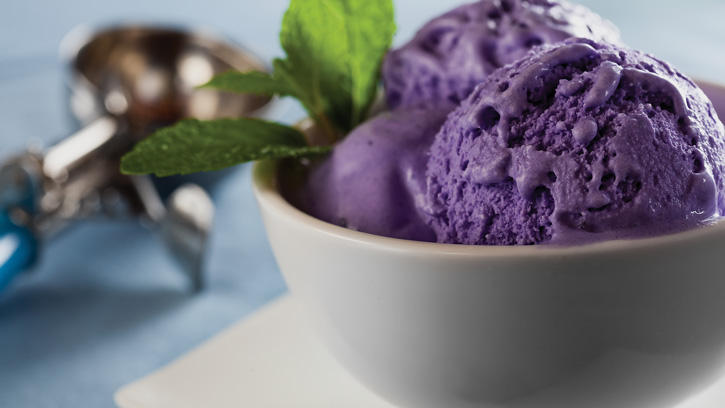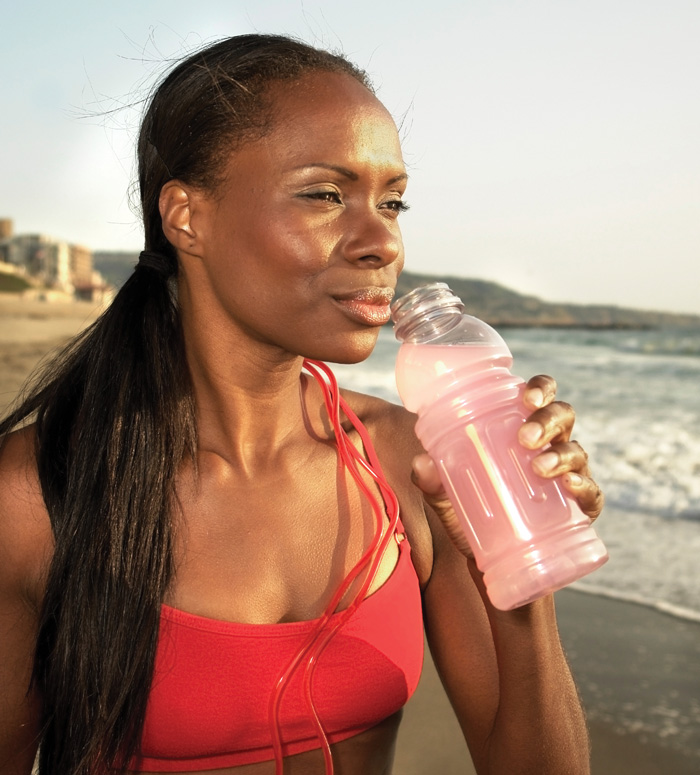Four global flavor trends revealed; Pandemic fuels chocolate market
NEWS
Global flavor trends look ahead and back
In research spanning five global regions, McCormick & Company connected with notable culinary experts to uncover four flavor trends that will spark innovation in taste, color, and textures for both food and drink.
The four trends move plants further into the spotlight, invite comforting global flavors to the table, renew interest in fresh ingredients and textures of the coast, and sharpen the focus on health and wellness through mindful eating and ancient philosophy:
• Plants Pushing Boundaries. Plant-based diets have become mainstream, developing into a flora-focused culinary approach that honors vegetables, fruits, and botanicals to deliver indulgence, color, texture, and sensation. Key flavors include ube (purple yam), Szechuan buttons (edible flower buds), and trumpet mushrooms.
• Humble Nosh. Inspired by the Yiddish word “nashn,” meaning to nibble on, the noshing trend connects consumers with comforting, nourishing food and drinks while satisfying cravings from around the world. Key flavors include chaat masala (Indian spice blend), pandan kaya (Malaysian jam), and crisped chilies.
• Underwater, Under Discovered. Delving into less explored ingredients and textures from fresh and salt water, the trend uproots underwater botanicals to infuse snacks, meals, and beverages with an earthy flavor. Key ingredients include dulse (red sea lettuce flakes), spirulina (blue-green algae), and sea grapes (soft, green algae).
• Physiological Eating. Inspired by ancient practices designed to achieve mind-body balance, the trend focuses on Ayurvedic practice, which uses six tastes (sweet, sour, salty, bitter, astringent, and pungent) to achieve balance, as well as warming and cooling techniques to provide comfort to the body. Key flavors include coriander, lemon, sea salt, cumin, turmeric, and ginger.
Pandemic fuels chocolate market
Interest in snacking, baking, and extended holiday celebrations has contributed to a surge in the U.S. chocolate industry, which exhibited sales growth of 12% in 2020, pushing chocolate sales to $27 billion, as reported by Packaged Facts. Although sales are projected to decelerate over the next five years, the boom in 2020 and 2021 is predicted to affect the market for years to come.
During the pandemic, one-fourth of consumers reported extending or planning to extend seasonal celebrations compared with pre-pandemic behavior. Seasonal treats were available at stores earlier than usual, and marketers may continue to extend holiday chocolate promotions going forward.
Additionally, at-home snacking and baking are expected to remain popular, according to Packaged Facts. Although consumers will resume many activities outside of the home after getting vaccinated, many will continue to work from home on at least a part-time basis, spurring more home baking and snacking activity.
With an increased focus on health taking hold, many chocolate marketers are offering products that tap into better-for-you food trends that also provide indulgence. Opportunities continue to expand in the better-for-you chocolate market, with clean label, vegan/plant-based, low-carb, organic, and no-sugar-added versions appealing to consumers.
Five new species of Listeria uncovered
Cornell University researchers recently identified five previously unknown and novel relatives of the Listeria bacteria. The discovery can help to advance food safety by helping food facilities identify potential growth niches that may have been overlooked.
“This research increases the set of Listeria species monitored in food production environments,” said lead author Catharine R. Carlin in a press release. “Expanding the knowledge base to understand the diversity of Listeria will save the commercial food world confusion and errors, as well as prevent contamination, explain false positives, and thwart foodborne outbreaks.”
One of the novel species, L. immobilis, lacked motility, or the ability to move. Since motility was thought to be common among Listeria closely related to L. monocytogenes, it was used as a key test to detect the bacteria. The new discovery effectively calls for a rewrite of the standard identification protocols issued by food safety regulators, Carlin said.
“This paper describes some unique characteristics of Listeria species that are closely related to Listeria monocytogenes, which will be important from an evolutionary perspective and from a practical standpoint for the food industry,” said co-author Martin Wiedmann in a press release. “Likely, some tests will need to be re-evaluated.”
The Centers for Disease Control and Prevention estimate that 1,600 people in the U.S. get listeriosis annually and nearly 260 die. Understanding different species is key to comprehending their similarities. “This will help us to get better about identifying Listeria monocytogenes,” Wiedmann said, “and not misidentifying it as something else.”
Ramping up pandemic preparedness
COVID-19 put food and beverage companies to the test, challenging them to produce and distribute products under constraints that they had never before experienced. In light of the lessons learned, it comes as no surprise that 78% of food and beverage executives responding to a study conducted by AIB International said they are actively preparing for a future global pandemic, with 30% expecting a similar event within the next four years and 50% expecting one within the next decade.
AIB International commissioned the study to gain insight into the pandemic’s impact on the food and beverage industry and evaluate preparedness for a future pandemic. The study surveyed 325 senior-level North American executives at leading food and beverage companies, retailers, distributors, and other supply chain partners. The majority (61%) of respondents reported that they did not have an adequate plan in place to deal with COVID-19.
“This research highlights the dramatic impacts felt by so many companies in the industry due to a lack of preparedness,” said Steve Robert, global vice president, product innovation, AIB International, in a press release. “Despite the understandable ‘crisis fatigue’ from grappling with COVID-19 over the past year, it’s clear that now is the time to prepare for the future and elevate critical planning to a best-in-class standard. Should a future pandemic occur, improved preparedness will help offset some of the costs and disruption that so many operations have realized over the past year.”
Need exercise mojo? Drink pink!
For exercisers who would like to run faster and farther, a pink drink might be just the thing. Results of a study published in Frontiers in Nutrition found that pink drinks can increase exercise performance by 4.4% as well as elevate the “feel good” effect that makes exercise seem easier.
The study, carried out by scientists at the Centre for Nutraceuticals in the University of Westminster, is the first to assess the effect of drink color on exercise performance. The results provide the potential to open a new avenue of research in the field of sports drinks and exercise.
During the study, participants were asked to run on a treadmill for 30 minutes at a self-selected speed while rinsing their mouths with a low-calorie, artificially sweetened drink that was either pink or clear.
Both drinks were the same and differed only in appearance. Participants who rinsed with the pink drink ran an average of 212 meters farther and increased their mean speed by 4.4%. Feelings of enjoyment were also enhanced.
Sanjoy Deb, corresponding author on the paper, remarked in a press release, “The findings from our study combine the art of gastronomy with performance nutrition, as adding a pink colorant to an artificially sweetened solution not only enhanced the perception of sweetness, but also enhanced feelings of pleasure, self-selected running speed, and distance covered during a run.”






